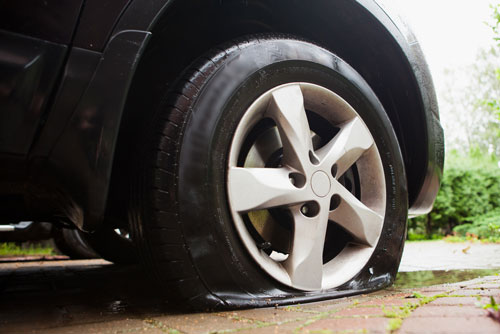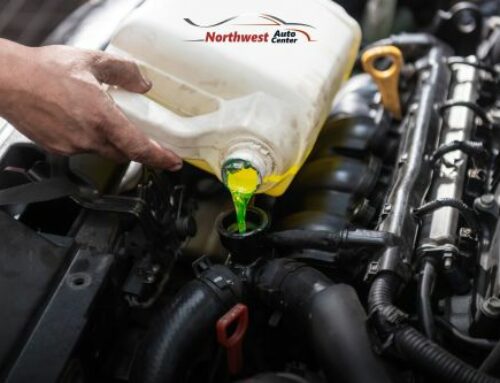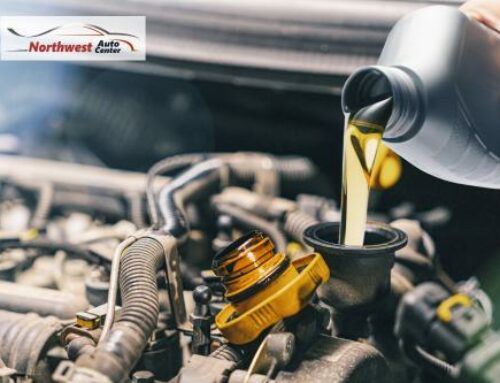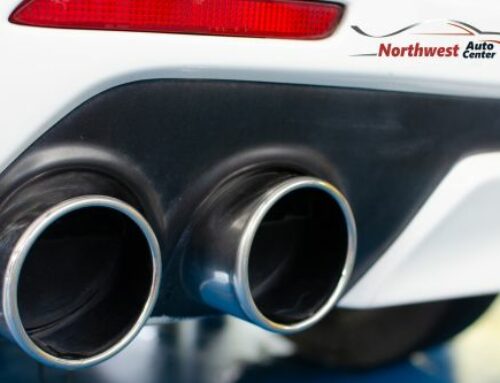Part of owning a car means preparing for problems, including flat tires. And, there are a lot of causes behind just that. The good news is that there are ways to prepare for and prevent flat tires from occurring. Take a look at our tips on preventing flat tires and the warning signs your tire may be losing air.

Avoiding and Preventing Flat Tires
1. Check Tire Pressure
Losing air from a tire leads to a flat. That’s a no-brainer. So, checking your car’s tire pressure regularly will help you spot a leak before it turns into a flat.
If you’re unsure of what your tire pressure should register at, you can find the psi (pounds per square inch) on a label in the driver’s door jamb, in your car’s manual or on the side of the tire as well.
Cars now come with their sensors that will alert you when a tire is low. Another tell-tale sign of low tire pressure is a drop in your vehicle’s gas efficiency. Lower gas mileage is often a sign that you’re losing air from the tires.
2. Lessen the Load
Carrying heavy weight in your car can threaten the air pressure in your car’s tires. Maybe you’re moving or transporting building supplies in your vehicle. It’s a good idea to check the air in the good ol’ tires before getting the road, especially if you’ll be driving a long distance.
3. Avoid Risks
Running over debris is one of the easiest ways to pop a tire. It only takes one rogue screw in a construction site to give you a flat. Instead of driving through that gauntlet of backed up traffic and heavy machinery, find an alternate detour to avoid putting your tires at risk.
Other hazards include potholes and debris in the middle of the road. Sometimes it’s hard to identify debris on the roads, so we suggest to stay alert to avoid it.
4. Rotate Your Tires
Part of your regular maintenance includes rotating your tires, which goes a long way for preventing flat tires. Doing this keeps your tires from wearing irregularly, saving the tread for more extended use. You can find your car’s rotation schedule inside your manual. The mile recommendation for a rotation depends on your vehicle and range from 5,000 miles to 10,000 miles.
When you get your tires rotated, you should inspect the quality of your tires. This way you’ll be well aware of how your tires are performing and when you can expect to replace them.
5. Inspect Your Tires
You don’t have to wait to take your car in for maintenance to inspect your tires. Pay attention to your tires’ tread. If it looks like it’s wearing down, it may be time to replace them.
Regularly check your tires’ valve stems and their screw caps. These can be a source of leakage when tires begin to age.
6. Don’t Over-Inflate
It may seem that putting more air in your tires would be the best way of preventing flat tires, but that’s wrong. Pumping your tires with too much air will make them more susceptible to blowouts.
Keep your tires inflated at the recommended psi to avoid over inflation and blowouts.
7. Watch Out for Recalls
Sometimes manufacturing companies will recall a tire make because they are defective. It is essential for you as a driver to replace your tires if the company has recalled them.
Luckily there are ways to check your tire make, like on the National Highway Traffic Safety Administration (NHTSA) website. You can also sign up to receive emails that alert you of these recalls on the same site.
Prepare for a Flat Tire
Even if you rotate your tires and do everything right, flats sometimes happen out of nowhere. So, it’s always smart to be prepared in case you don’t experience a flat tire. Take a peek at some of our suggestions on being ready for the event of a flat.
- Check your spare tire to make sure it still holds air and has inflated with the recommended psi.
- Make sure you have the necessary tools on hand to change a flat.
- Review the proper procedure in changing a flat.
- Remember to use caution when driving on a spare tire.
If you have any questions about the condition of your tires or would like to ask us about purchasing new ones, contact us at Northwest Auto Center.






Leave A Comment
You must be logged in to post a comment.